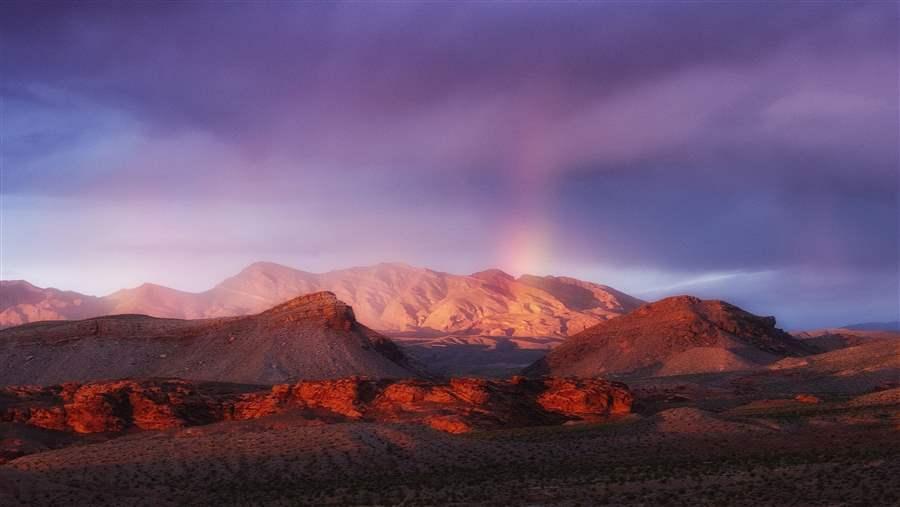Las Vegas Pahrump Region Offers Opportunities for Protecting the Wild
 ©Kurt Kuznicki
©Kurt KuznickiGold Butte
Just outside the glitz of Las Vegas lies an ancient trove of wilderness and other natural areas managed by the Bureau of Land Management. For those who love to hike, rock climb, and observe wildlife, these quiet, wild landscapes—the North McCullough Mountains, Red Rock Canyon National Conservation Area, and La Madre Mountains Wilderness Area—offer endless opportunities for exploration.
This 3.1-million-acre swath of southern Nevada, the Las Vegas-Pahrump region, contains important habitat for a diversity of wildlife, including bighorn sheep and desert tortoises, and significant archeological and paleontological sites. Here, vast stretches of wild desert and remote rugged landscapes allow visitors the chance to observe a unique array of plant and animal life.
Despite these rich characteristics, just 7 percent of the BLM planning area—230,000 acres—has been permanently safeguarded with wilderness designations. In fact, there are many unprotected lands with wilderness characteristics here which the BLM could rightfully manage for their wilderness values or also allow development to occur.
BLM released a draft plan today specifying how it will administer this region of public lands over the next 20 years. The agency identified about 240,000 acres, or 8 percent of the planning area, as lands that contain wilderness characteristics.
In the preferred plan alternative, the agency proposed to protect only 36,033 of these lands. Numerous other areas deserving of such conservation are either not identified as having wilderness characteristics or are not slated for protection, including Billy Goat Peak and Black Ridge in the Gold Butte area, and the Middle and North McCullough Mountains, Arrow Canyon, Amargosa Valley, Virgin Mountains, and Buffington Pockets. These lands offer not only a variety of recreational opportunities for visitors and Nevadans, they also are home to desert tortoises, gila monsters, kit fox, and the rare Las Vegas bearpoppy.
“The backyard of Las Vegas offers an array of incredible scenic vistas, wildlife habitat, and recreational opportunities for Nevadans and visitors to enjoy,” said Ken Rait, a director of Pew’s U.S. public lands project. “While we commend the BLM for identifying several large areas of critical environmental concern, the agency can and must do better to protect wilderness values and our Western heritage. We encourage the BLM to finalize a plan that more effectively balances conservation with development.”
The Pew Charitable Trusts and local partner Friends of Nevada Wilderness want to ensure that the final plan responsibly balances conservation with development and protects key areas for their natural values. BLM will accept public comments on the draft until January 8 and release a final plan and record of its decision in 2015.
“We encourage the public to get involved in this process by filing comments to ensure that our shared heritage is adequately safeguarded by the agency,” said Rait.











